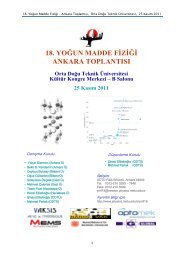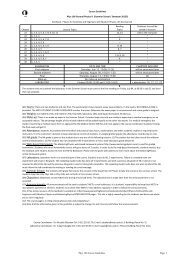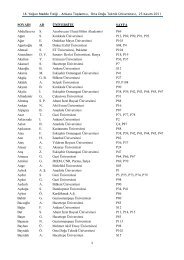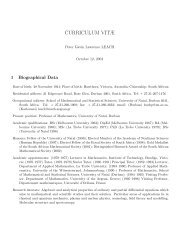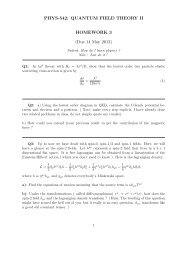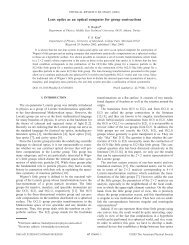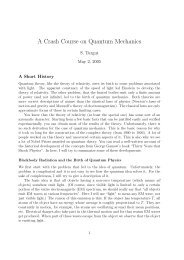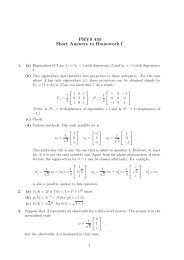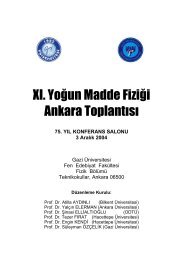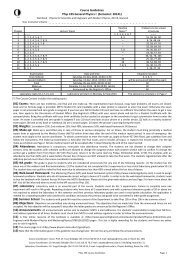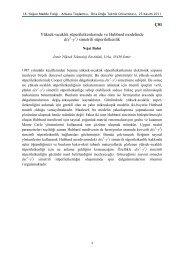SExtractor Draft - METU Astrophysics
SExtractor Draft - METU Astrophysics
SExtractor Draft - METU Astrophysics
- No tags were found...
Create successful ePaper yourself
Turn your PDF publications into a flip-book with our unique Google optimized e-Paper software.
23first computed within the same background meshes as those described in §?? 12 . The resultinglow-resolution variance map is then bicubic-spline-interpolated on the fly to producethe actual full-size variance map. A check-image with CHECKIMAGE TYPE MINIBACK RMScan be requested to examine the low-resolution variance map.• MAP RMS: the FITS image specified by the WEIGHT IMAGE file name must contain a weightmapin units of absolute standard deviations (in ADUs per pixel).• MAP VAR: the FITS image specified by the WEIGHT IMAGE file name must contain a weightmapin units of relative variance. A robust scaling to the appropriate absolute level isthen performed by comparing this variance map to an internal, low-resolution, absolutevariance map built from the science image itself.• MAP WEIGHT: the FITS image specified by the WEIGHT IMAGE file name must contain aweight-map in units of relative weights. The data are converted to variance units (by definitionvariance ∝ 1/weight), and scaled as for MAP VAR. MAP WEIGHT is the most commonlyused type of weight-map: a flat-field, for example, is generally a good approximation to aperfect weight-map.7.2 Weight thresholdIt may happen, that some weights are too low (or variances too high) to be of any interest: it isthen more appropriate to discard such pixels than to include them in unweighted measurementssuch as FLUX APER. To allow discarding these very bad pixels, a threshold can be set with theWEIGHT THRESH parameter. The unit in which this threshold should be expressed is that of inputdata: ADUs for BACKGROUND and MAP RMS maps, uncalibrated ADUs 2 for MAP VAR,and uncalibrated weight-values for MAP WEIGHT maps. Depending on the weight-map type,the threshold will set a lower or a higher limit for “bad pixel” values: higher for weights, andlower for variances and standard deviations. The default value is 0 for weights, and 10 30 forvariance and standard deviation maps.7.3 Effect of weightingWeight-maps modify the working of <strong>SExtractor</strong> in the following respects:1. Bad pixels are discarded from the background statistics. If more than 50% of the pixelsin a background mesh are bad, the local background value and its standard deviation arereplaced by interpolation of the nearest valid meshes.2. The detection threshold t above the local √ sky background is adjusted for each pixel i withvariance σi 2: t i = DETECT THRESH × σi 2 , where DETECT THRESH is expressed in units ofstandard deviations of the background noise. Pixels with variance above the threshold setwith the WEIGHT THRESH parameter are therefore simply not detected. This may result insplitting objects crossed by a group of bad pixels. Interpolation (see §7.5) should be usedto avoid this problem. If convolution filtering is applied for detection, the variance map isconvolved too. This yields optimum scaling of the detection threshold in the case wherenoise is uncorrelated from pixel to pixel. Non-linear filtering operations (like those offeredby artificial retinae) are not affected.12 The mesh-filtering procedures act on the variance map, too.



